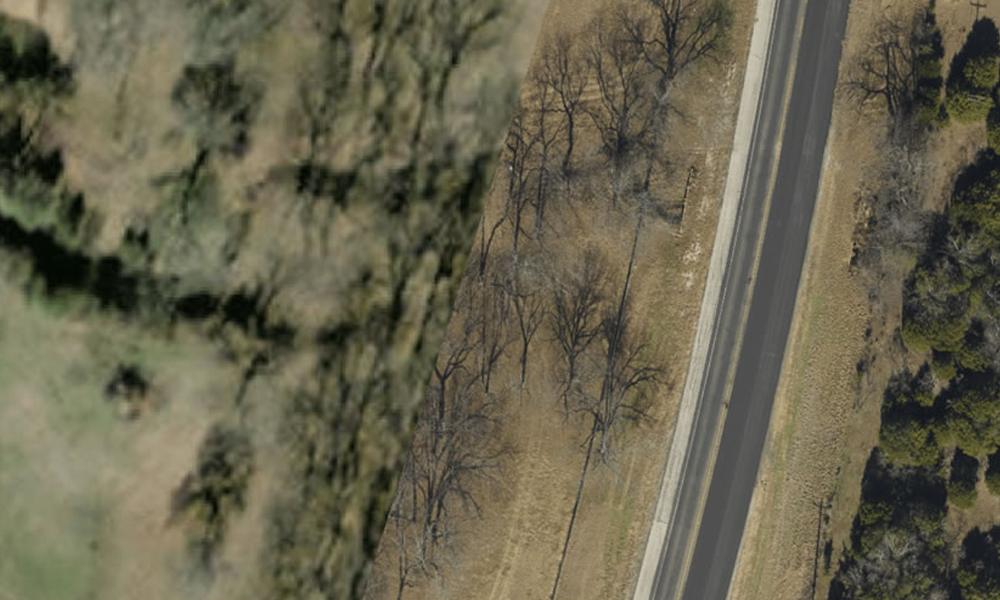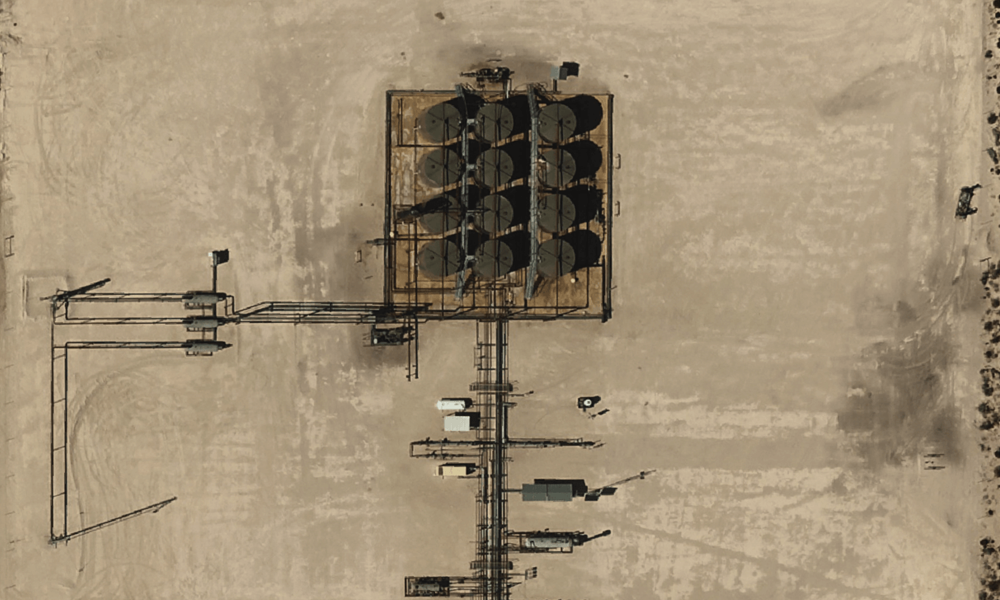New Permian Pipeline Projects to Deliver More Oil & Gas to Market
New Permian Pipeline Projects to Deliver More Oil & Gas to Market
New Permian Pipeline Projects to Deliver More Oil & Gas to Market
New Permian Pipeline Projects to Deliver More Oil & Gas to Market

Since late 2021 the Permian Basin has set records every month for oil production, and natural gas is booming as well. It’s filling gaps created by world events and moves toward cleaner fuels, among others. With that production growth comes the need for more pipeline projects, to carry it where it needs to go.
Natural Gas or Crude Oil Pipelines?
For more than 100 years, oil has been king in the Permian, with natural gas only recently becoming other than something to be flared. But as the basin matures, gas-to-oil ratios are changing.
At January’s Goldman Sachs Global Energy and Clean Technology Conference, Pioneer CEO Scott Sheffield predicted that, within the next 10 years, gas production will account for more than 50% of production. He sees Permian natural gas production reaching 30 billion cubic feet per day (Bcf/d) over that stretch. Because of that growth, he believes new gas pipelines will be needed every 18-24 months for at least the near future.
That said, crude oil will continue to grow as well, says a Plains All America Pipeline release from February. They’re looking for Basin production to grow by “as much as 500,000 barrels per day in 2023,” said the report.
Upcoming Pipeline Projects 2023
Here’s a sample of what projects are in the pipeline:
ONEOK Saguaro Connector Pipeline
One of the top midstream operators in the US Midwest is ONEOK. Their Saguaro Connector Pipeline subsidiary recently filed a “Presidential Permit application with the Federal Energy Regulatory Commission (FERC) to construct and operate facilities for the exportation of natural gas at a new international border-crossing at the U.S. and Mexico border in Hudspeth County, Texas,” according to a press release.
The line will consist of about 155 miles of 48-inch natural gas pipe. It will originate at the Waha Hub in Pecos County. Capacity will be about 2.8 (Bcf/d). ONEOK expects to make a final investment decision (FID) by mid-2023.
Kinder Morgan Permian Highway
KM’s Permian Highway Pipeline (PHP) expansion project is expected to increase the existing line’s capacity by about 550 million cubic feet per day (MMcf/d). PHP extends from the Waha area to other lines near Katy, Texas and other US Gulf Coast markets. The main work will involve adding compression.
Kinder Morgan reports that land acquisition is continuing, along with the lining up of materials and contractors for the work. It’s expected to be completed by late 2023.
KM is also hoping to grow capacity in nearby states, as they are filing a FERC application for their Evangeline Pass expansion project in Louisiana and Mississippi. The upgrade will provide up to 2.0 million dekatherms per day (Dth/d) of additional natural gas capacity on Kinder Morgan’s TGP and SNG systems in those states.
Matterhorn Express Pipeline
In May of 2022 WhiteWater EnLink Midstream and Devon Energy reached a final investment decision (FID) to move ahead with constructing the Matterhorn Express Pipeline. Assuming approvals of regulators and others, they expect the line to be in service by Q4 2024.
Designed to carry up to 2.5 Bcf/d through 490 miles of pipe, it will reach from Waha to the Katy, Texas area.
Oil?
You may have noticed that pipeline construction is all about gas. One reason is that crude pipeline capacity is at 6.6 million barrels per day. When the bottom dropped out of consumption and prices in 2020, it led to a dramatic drop in production that left a lot of unused capacity. And while the US EIA predicts Permian Production will reach 5.7 million barrels per day in 2023, that would still leave a lot of space to grow.
Produced Water, Carbon Capture, Hydrogen
In the above point about whether Permian wells produce more oil or gas, the true answer is that they produce mostly water—up to 10-1 water cuts in the Delaware. And, like its more profitable cousins, that water has to go somewhere.
Some goes back into use in fracking, but most (90% or so) must be pumped into disposal wells. And as those disposal wells around Midland, Odessa and Big Spring are being connected to the increase in earthquakes, the water is being shipped elsewhere—by pipeline. This is another growth area.
Most hydrogen and CCS growth is centered along the Texas Gulf Coast. But producers like Occidental Permian (Oxy) are looking at CCS projects in west Texas, which could require pipeline collection networks.
Now and Future Challenges
Pipeline growth is great for the industry and consumers, but it comes with challenges, both in planning stages and over the long haul.
New pipelines require route planning, surveys, right-of-way (ROW) acquisition and other actions even before construction begins. When building does start, there’s a lot of progress to monitor and track. And after they’re finished there are ongoing regulatory matters to manage.
The Pipeline and Hazardous Materials Safety Administration (PHMSA) of the US Department of Transportation (DOT), requires regular updates on any buildup of houses or businesses near an oil or gas pipeline, due to safety issues. PHMSA requires other monitoring as well. That means midstream companies must schedule visual inspections on their existing systems – as well as the new pipelines coming online – to comply with regulations and to assure the nearby area’s safety.
Aerial inspections will be key tools for efficiently expediting the above-listed requirements.

Since late 2021 the Permian Basin has set records every month for oil production, and natural gas is booming as well. It’s filling gaps created by world events and moves toward cleaner fuels, among others. With that production growth comes the need for more pipeline projects, to carry it where it needs to go.
Natural Gas or Crude Oil Pipelines?
For more than 100 years, oil has been king in the Permian, with natural gas only recently becoming other than something to be flared. But as the basin matures, gas-to-oil ratios are changing.
At January’s Goldman Sachs Global Energy and Clean Technology Conference, Pioneer CEO Scott Sheffield predicted that, within the next 10 years, gas production will account for more than 50% of production. He sees Permian natural gas production reaching 30 billion cubic feet per day (Bcf/d) over that stretch. Because of that growth, he believes new gas pipelines will be needed every 18-24 months for at least the near future.
That said, crude oil will continue to grow as well, says a Plains All America Pipeline release from February. They’re looking for Basin production to grow by “as much as 500,000 barrels per day in 2023,” said the report.
Upcoming Pipeline Projects 2023
Here’s a sample of what projects are in the pipeline:
ONEOK Saguaro Connector Pipeline
One of the top midstream operators in the US Midwest is ONEOK. Their Saguaro Connector Pipeline subsidiary recently filed a “Presidential Permit application with the Federal Energy Regulatory Commission (FERC) to construct and operate facilities for the exportation of natural gas at a new international border-crossing at the U.S. and Mexico border in Hudspeth County, Texas,” according to a press release.
The line will consist of about 155 miles of 48-inch natural gas pipe. It will originate at the Waha Hub in Pecos County. Capacity will be about 2.8 (Bcf/d). ONEOK expects to make a final investment decision (FID) by mid-2023.
Kinder Morgan Permian Highway
KM’s Permian Highway Pipeline (PHP) expansion project is expected to increase the existing line’s capacity by about 550 million cubic feet per day (MMcf/d). PHP extends from the Waha area to other lines near Katy, Texas and other US Gulf Coast markets. The main work will involve adding compression.
Kinder Morgan reports that land acquisition is continuing, along with the lining up of materials and contractors for the work. It’s expected to be completed by late 2023.
KM is also hoping to grow capacity in nearby states, as they are filing a FERC application for their Evangeline Pass expansion project in Louisiana and Mississippi. The upgrade will provide up to 2.0 million dekatherms per day (Dth/d) of additional natural gas capacity on Kinder Morgan’s TGP and SNG systems in those states.
Matterhorn Express Pipeline
In May of 2022 WhiteWater EnLink Midstream and Devon Energy reached a final investment decision (FID) to move ahead with constructing the Matterhorn Express Pipeline. Assuming approvals of regulators and others, they expect the line to be in service by Q4 2024.
Designed to carry up to 2.5 Bcf/d through 490 miles of pipe, it will reach from Waha to the Katy, Texas area.
Oil?
You may have noticed that pipeline construction is all about gas. One reason is that crude pipeline capacity is at 6.6 million barrels per day. When the bottom dropped out of consumption and prices in 2020, it led to a dramatic drop in production that left a lot of unused capacity. And while the US EIA predicts Permian Production will reach 5.7 million barrels per day in 2023, that would still leave a lot of space to grow.
Produced Water, Carbon Capture, Hydrogen
In the above point about whether Permian wells produce more oil or gas, the true answer is that they produce mostly water—up to 10-1 water cuts in the Delaware. And, like its more profitable cousins, that water has to go somewhere.
Some goes back into use in fracking, but most (90% or so) must be pumped into disposal wells. And as those disposal wells around Midland, Odessa and Big Spring are being connected to the increase in earthquakes, the water is being shipped elsewhere—by pipeline. This is another growth area.
Most hydrogen and CCS growth is centered along the Texas Gulf Coast. But producers like Occidental Permian (Oxy) are looking at CCS projects in west Texas, which could require pipeline collection networks.
Now and Future Challenges
Pipeline growth is great for the industry and consumers, but it comes with challenges, both in planning stages and over the long haul.
New pipelines require route planning, surveys, right-of-way (ROW) acquisition and other actions even before construction begins. When building does start, there’s a lot of progress to monitor and track. And after they’re finished there are ongoing regulatory matters to manage.
The Pipeline and Hazardous Materials Safety Administration (PHMSA) of the US Department of Transportation (DOT), requires regular updates on any buildup of houses or businesses near an oil or gas pipeline, due to safety issues. PHMSA requires other monitoring as well. That means midstream companies must schedule visual inspections on their existing systems – as well as the new pipelines coming online – to comply with regulations and to assure the nearby area’s safety.
Aerial inspections will be key tools for efficiently expediting the above-listed requirements.







